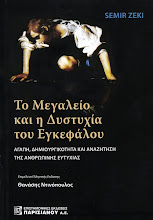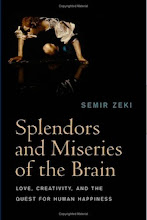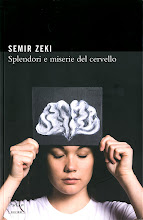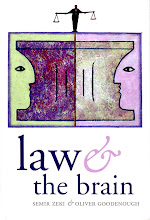Much has been written recently about sensationalizing
science, by hyping things up, exaggerating the importance or novelty of new
findings and giving over-simplistic accounts of them.
Up to a point scientists themselves are
responsible for this. Referring to a molecule implicated in certain behaviours
as the “moral molecule” obviously invites criticism, and has done so. But
referring to the Higgs boson as the “God particle” has not attracted the same
criticism, for reasons that are difficult to understand.
The term “God particle” was not given by
scientists. As I understand it, a distinguished scientist wrote a book entitled
“The Goddam Particle” but his publishers thought the title too offensive. Of
course, what the title implied was “that goddam particle is so elusive, and
therefore so difficult to find”. But apparently the publishers changed the
title to the God Particle, and it has stuck ever since. The God particle of
course has a different sense altogether – even a religious sense. But I have
not heard scientists disavowing the name, with all its sensationalist
associations. Instead they seem to have reveled in it.
And just recall how the Higgs boson, or the
God particle, was announced recently. A press conference was announced some
weeks before, keeping all guessing as to what would be revealed at the
conference. Rumours became rife and were quashed, adding to the tension and the
sensationalism. Scientists seemed to revel in it.
Compare that with the announcement of the
current status of junk DNA, which was not accompanied by all the fanfare.
Instead, the results were published in 2-3 journals. The discovery nevertheless
attracted widespread attention in the press and was on the whole well
summarized for the lay public – a far better example of scientific conduct.
To an equal extent, the current scientific
culture is fertile ground for sensationalism and indeed encourages it. All
scientists, especially young ones aspiring to a good appointment, yearn to
publish in “high impact” journals. I recently saw an advertisement for a
research position at a very distinguished university. It said that “the
successful candidate will have a proven ability to publish in high impact
journals”.
Notice, it said nothing about a proven
ability to do good or rigorous science, but only to publish in high impact journals. And it
is common knowledge that what gets published in high impact journals is very
variable, and not always the best science.
And how does one publish in high impact
journals?
Well, one way is to do good science. But
another way is to do sensational science.
Some of these high impact journals now
screen a submission before sending it out for peer review and informed opinion.
I know of one journal which rejects as follows:
“This is not meant as a
criticism of the quality of the data or the rigor of the science, but merely
reflects our desire to publish only the most influential research.”
Read it well, for it says it
all: the science may be rigorous and good but, in our opinion, it is not
influential research.
In other words, we only want
to publish the most sensational research.
And this is not the only
journal that pre-screens articles before deciding to send them out for peer
review.
I do not believe that this
does science any good service.
Who, after all, decides what
is influential research but future generations.
And so we come full circle:
To get a good job, you have
to publish in high impact journals.
To publish in high impact journals,
you have to do sensational science.
Good science helps but is not the
determining factor. It must, in the opinion of those who may not be especially
versed in the subject, be influential.
And the boundary between
sensational science and exaggeration is….rather thin.









 Contact us
Contact us